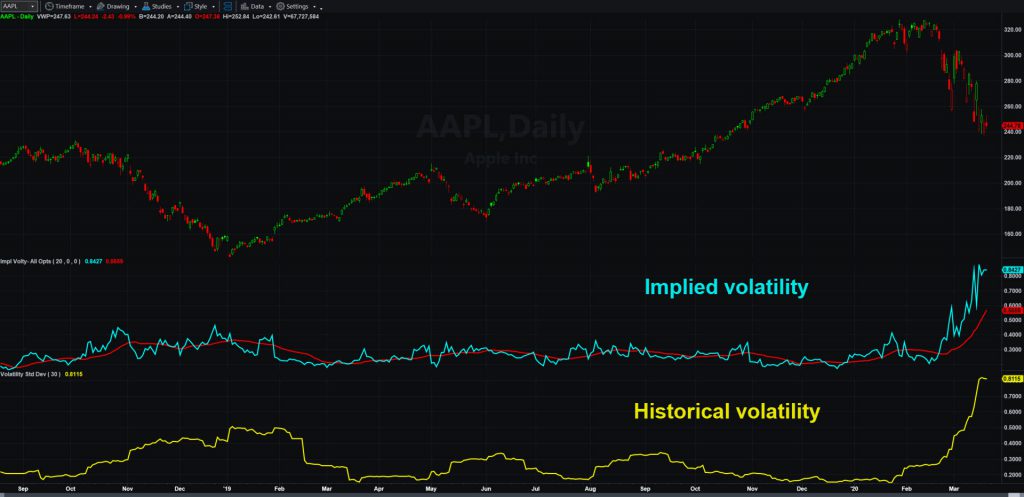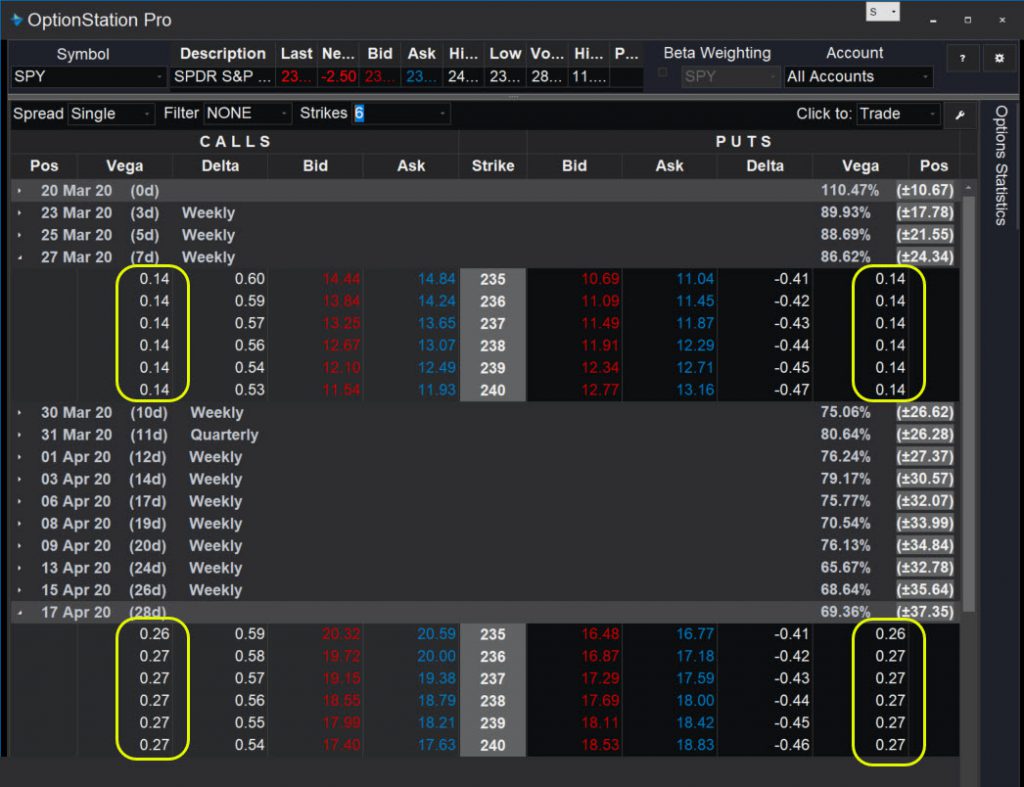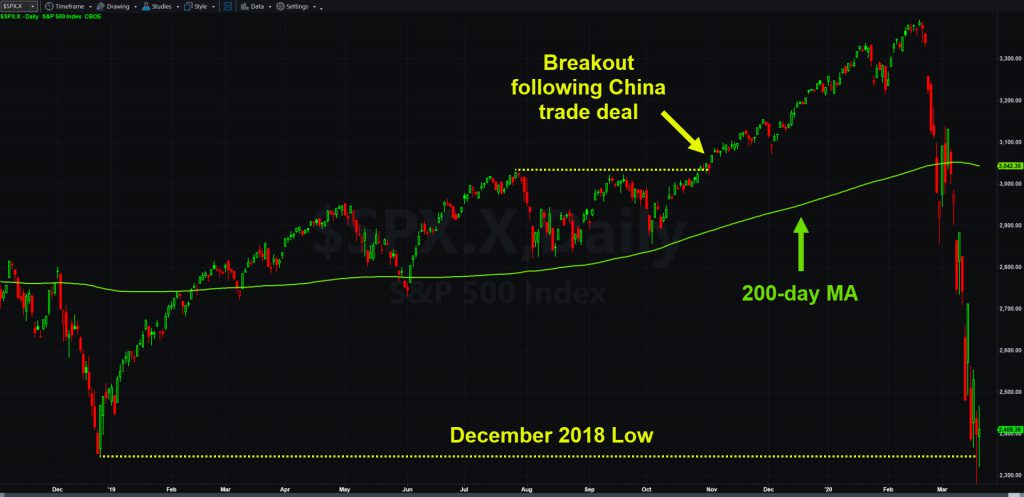The S&P 500 is trying to hold a key level as doctors talk about a potential coronavirus treatment. Is it market trying to bounce?
If your answer is “yes,” there’s one potential mistake you might want to avoid: overpaying for call options.
Several variables determine the value of options. They include price and time until expiration. Implied volatility is another ingredient that’s especially important given how wild the market’s been recently.
Implied volatility indicates how much traders think a given stock or exchange-traded fund is going to move. It increases when the market is turbulent, like now. Higher implied volatility makes options more expensive.
That creates a unique risk for traders wanting to go long. They might buy calls on Apple (AAPL), Tesla (TSLA) or the SPDR S&P 500 ETF (SPY). Then they might lose money as the stocks rally.

The reason is that implied volatility tends to decrease when the market rebounds. Therefore they might be right about direction but get burned because they overlook how lower volatility would impact premiums.
Vega and Delta
Some options indicators can help understand this risk. Vega tells you how much one percentage point change in implied volatility impacts a contract’s premium. Higher readings mean there’s more risk of volatility falling.
Delta tells you how much a $1 move in the underlier impacts a contract’s premium.
You’ll notice that longer-dated options have higher vegas. So traders buying calls in hope of a rally may want to focus on shorter-term contracts with higher deltas.

Alternately, they may want to consider selling options to profit from volatility dropping. This could entail covered calls or credit spreads.
Is the Selloff Ending?
Today brought no shortage of bearish news relating to coronavirus. Jobless claims spiked to a 2-1/2 year high and the Philadelphia Federal Reserve’s manufacturing index had its biggest drop ever. In both cases, the outbreak’s impact on business was to blame.
But there’s also new hope of a potential cure from the old malaria drug Plaquenil. A small study earlier this month suggested it may eliminate Covid-19 in infected patients. Using an established and approved compound could result in much quicker treatment than needing to develop a new vaccine.
Meanwhile, the S&P 500 is trying to hold its 2018 lows around 2350. Some chart watchers have eyed this level as potential support. If buyers are looking for a bounce, this may be a logical place.

In conclusion, we’re not trying to predict anything. But bear markets don’t last forever. Even if the market’s not ready to rebound, it’s still a good time to learn options so you’re ready when the selling ends.























